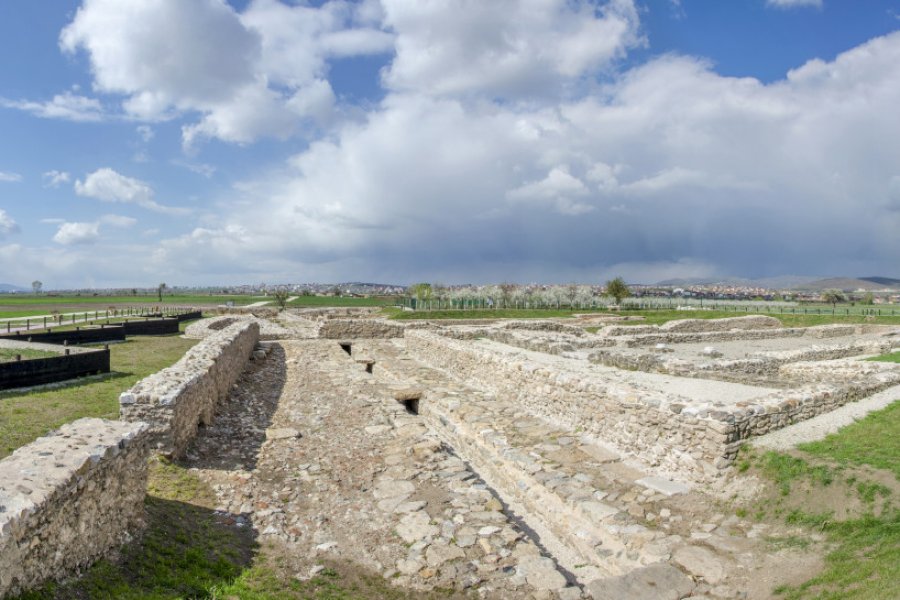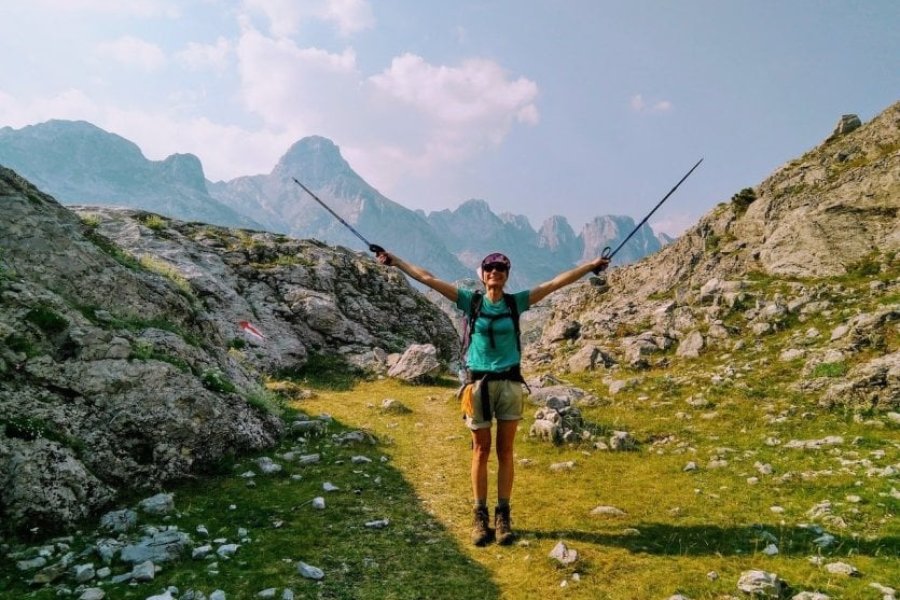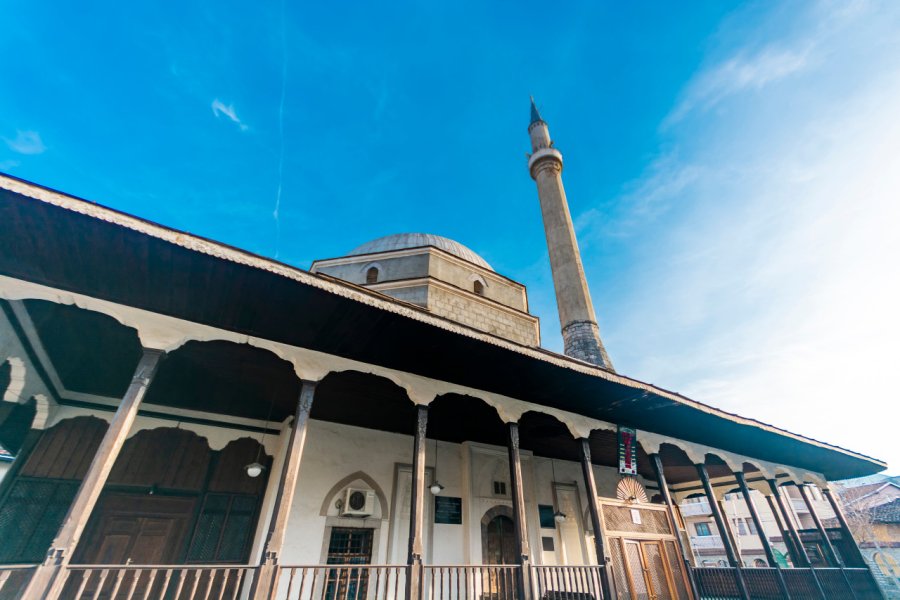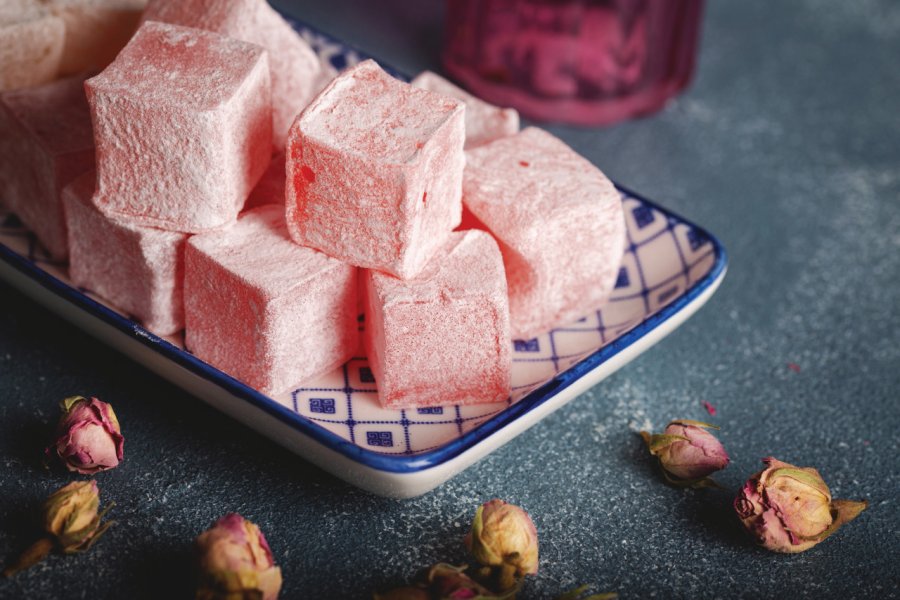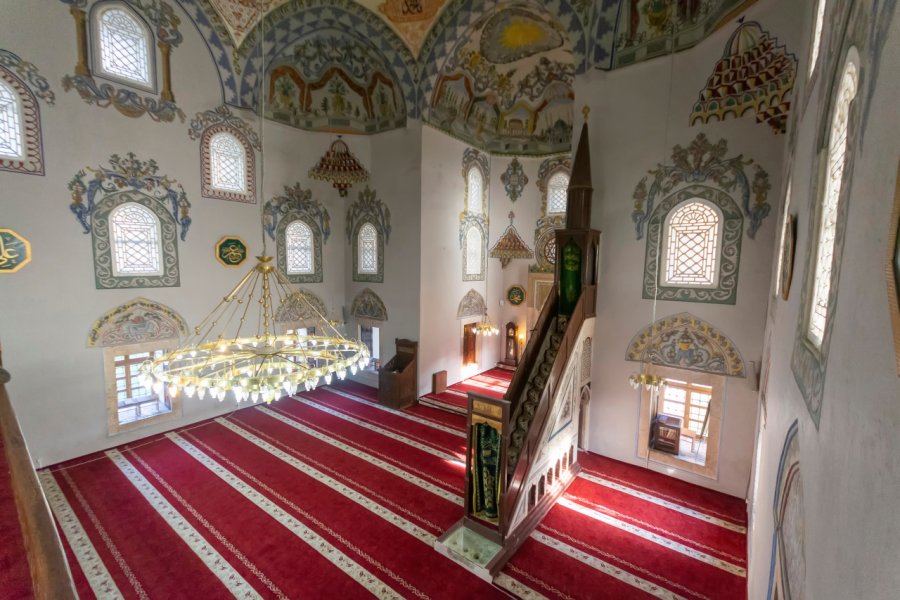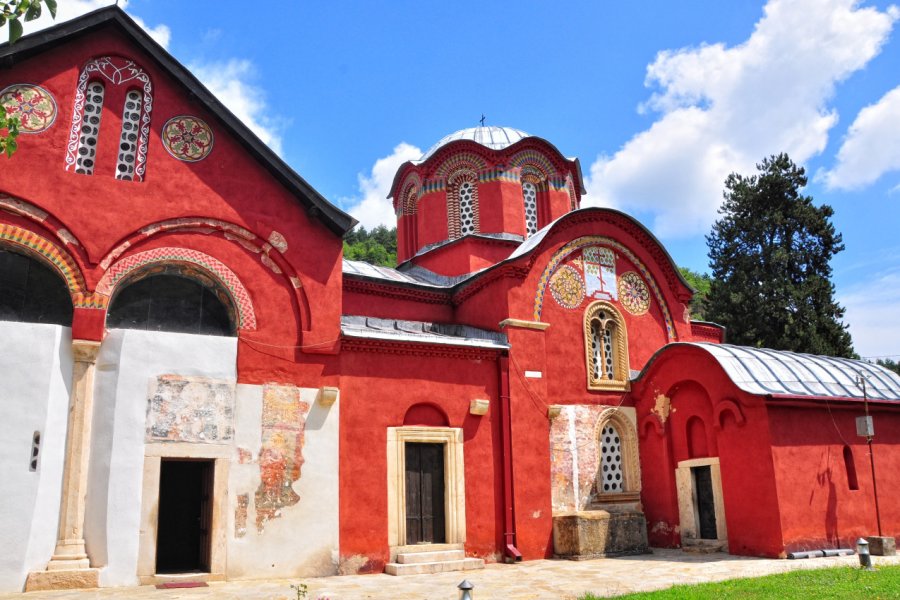Travel guide Kosovo
Kosovo is one of Europe's youngest countries. An emerging destination, it charms visitors with its rich culture and warm welcome. This small state, comparable in size to the Paris region, is bordered by Serbia, Northern Macedonia, Albania and Montenegro. Although not officially recognized by the UN or the EU, Kosovo is accessible to French tourists.
Nature reigns supreme here, with vast open spaces and breathtaking mountain ranges. 10% of the territory is even classified as a national nature park!
Immerse yourself in the country's rich and painful history and visit its most beautiful sites. Its tumultuous past is visible around every corner, with memorials dedicated to the victims of the 1999 war. However, stability returned with the declaration of independence in 2008. The best accommodation awaits you! Hiking opportunities abound, and the 13th-century Serbian monasteries are breathtaking.
Its rich and diversecultural heritage ranges from Ottoman influence to Serbian medieval heritage. The capital, Pristina, is the beating heart of this young nation. Here, ancient mosques stand side by side with modern buildings, creating a highly eclectic urban landscape. And don't forget to visit the ethnographic museum to immerse yourself in local culture and history. Despite its tumultuous past, Kosovo has preserved many monuments. The Fatih Mosque and Mother Teresa Cathedral coexist in harmony, reflecting the country's religious diversity. The National Library also stands out with its atypical Soviet-influenced architecture. The city of Prizren is a veritable open-air museum. Its ancient fortress offers panoramic views of the city and surrounding mountains. And, for nature lovers, the Bjeshkët e Nemuna ( Albanian Alps) national park is incredible.
Finally, discover a mix of Balkan and Mediterranean flavors in Kosovo's restaurants. Flija, a kind of multi-layered pancake, is a must, as are kebabs and pitas. With its incomparable hospitality and profound cultural richness, this small Balkan country is well worth exploring. Pack your bags!
What to see, what to do Kosovo?
-
Book an activity
-
Customized travel
- The most beautiful cities Kosovo
When to go Kosovo ?
Kosovo has a surprisingly diverse climate. There are three main climatic zones in this territory, which is barely larger than two French départements:
To the northeast, the Kosovo plain offers harsher winters and less rainfall;
In contrast, the Metochia plain in the south-west enjoys a temperate Mediterranean climate, with more generous rainfall and seasonal stability;
The mountainous areas, notably the Albanian Alps, Mount Šar and Mount Kopaonik, have an alpine climate, with lower temperatures and up to 100 days of snow a year.
The country's general climate is humid continental, characterized by hot summers reaching up to 40°C and cold winters plunging to -30°C, accompanied by heavy precipitation. The capital, Pristina, and the country's many monasteries can be visited all year round.
When should you visit Kosovo if you're interested in culture and history? The spring and autumn months are ideal for visiting historical sites, without the crowds of the summer months. Accommodation rates are also more affordable during the low season.
The best time to go to Kosovo is therefore spring and autumn, for an all-round experience. It combines a pleasant climate with reduced crowds. If you go to Kosovo in May, you can enjoy the Pristina Jazz Festival, a major event on the country's cultural scene.
As far as prices are concerned, the tourist high season, which runs from June to August, sees a rise in prices, especially in tourist areas. The low season, which covers the autumn and spring months, offers not only lower rates, but also a more authentic experience.
Are you a thrill-seeking adventurer or a cultural traveler? There's always a good time to discover Kosovo, that hidden Balkan nation.
Suggested addresses Kosovo
Travel Kosovo
-
Find a hotel
-
Car Rental
-
International e-SIM package
-
Find a local agency
Si vous disposez d’un véhicule sur place, il vous sera aisé de découvrir le Kosovo. En effet, ce pays est à peine grand comme deux départements français. Toutefois, en raison de l’état des routes et surtout des conditions de circulation il faudra plutôt estimer les temps de parcours en heures plutôt qu’en kilomètres.
D’une manière générale, au départ de Prishtinë/ Priština, l’ensemble du territoire est accessible en 1h30 à 2h.
Si vous ne disposez pas d’un véhicule individuel, il est tout à fait possible de circuler en bus et de recourir le cas échéant, localement à des taxis pour atteindre les sites non desservis par les lignes régulières. Cela prend juste un peu plus de temps.
La taille du pays et sa position géographique le placent comme une étape indispensable lors d’une visite plus générale des Balkans. La durée optimale pour découvrir le pays étant comprise entre 6 et 10 jours.
Find unique holiday offers with our partners
How to go Kosovo
How to go alone
Going it alone in Kosovo offers the advantage of flexibility and independence. Make sure you know the entry formalities, including visa and passport requirements. Most EU nationals can enter with a simple identity card.
Next, take out travel insurance to cover medical expenses and repatriation, as local medical facilities are limited. You should also consult your doctor about any vaccinations that are recommended before departure.
As far as accommodation is concerned, Pristina, the capital, offers a variety of options, from hostels to luxury hotels. In smaller towns, options are limited. If you plan to drive, EU licenses are generally recognized, but a green insurance card is required for your vehicle. Buses and cabs are cheap and reliable. The main towns are well served, but for access to rural areas, a car is more practical.
In terms of safety, Kosovo is safe enough for solo travellers.
How to go on a tour
Kosovo without the logistics! To get started, research the various travel agencies and tour operators offering organized trips to Kosovo. Check reviews from previous customers, itineraries and value for money. Also make sure that the agency is reliable and reputable: it must be registered and meet quality and safety standards.
Once you've chosen an agency, take the time to read the itinerary in detail. Check that it covers the destinations and activities that interest you most. Don't hesitate to ask questions about accommodation options, meals included, and transportation.
Finally, make sure the package includes a competent local guide who knows the country and its culture well. This is ideal not only to enrich your experience, but to get an immersive insight into Kosovo.
How to get around
There are several options for getting around Kosovo. The bus network is well-developed and provides an economical way to travel between the main towns of Pristina, Peja and Prizren.
If you prefer greater flexibility, car rental is also a viable option. European Union driving licenses are recognized in Kosovo, but make sure you have a green insurance card for your vehicle. This can be purchased at border crossings or online.
Cabs are another practical option for shorter journeys, especially in town. They are generally affordable, but it's a good idea to agree a price or make sure the meter is running before starting the journey to avoid misunderstandings.
For those staying in Pristina, the capital has a city bus system and several minibus lines serving the outlying districts and surrounding towns.
Featured articles Kosovo
Discover Kosovo
Thanks to its small size (the equivalent of two French departments) and its two central plains, it is easy to get around: by car or bus, it takes less than three hours to cross the country. But there are so many things to discover! On the national flag, the map of the small nation is surmounted by six stars representing "the six ethnic groups" of the country. Born out of a recent and inglorious war, Kosovo is the youngest country in Europe, having declared its independence in 2008. Yet the history of this small nation under construction is rich and complex. Notably, it was a Byzantine land that saw the birth of the great Nemanjić dynasty in the Middle Ages, who gave Kosovo its precious Orthodox monasteries. The nature here is also interesting and conducive to hiking: almost uninhabited, the mountains have a very rich biodiversity and important mineral resources.
Pictures and images Kosovo
The 12 keywords Kosovo
1. #Ajvar

A culinary speciality of Northern Macedonia imitated throughout the Balkans,ajvar (pronounced "aï-var") consists of a purée of peeled and seeded red peppers, mixed with garlic and sometimes eggplant, which is gently cooked in olive or sunflower oil. Preserved in jars, it will be consumed in winter.
2. #Flag(x)
Flags of Albania, Serbia, the KLA, the United States, Turkey, the Serbian Orthodox Church... are flying everywhere. The official one, the Flamuri i Kosovës (in Albanian) or Zastava Kosova (in Serbo-Croatian), was adopted in 2008 with the constraint imposed by the UN not to use the colours of either Serbia or Albania.
3. #Ibrahim Rugova

This internationally renowned writer (1944-2006), a Francophile and a great specialist in the work of Roland Barthes, has a very important place in the hearts of the country's Albanian inhabitants, but not necessarily in their libraries. Ibrahim Rugova was the very first president of the Republic of Kosovo, from 1992 until his death in 2005.
4. #Macchiato and madhe
To come to Kosovo and not taste the macchiato e madhe is undoubtedly to miss a key element of the local Albanian culture, especially in the cities where all bars now offer this great milky coffee. A fashion imported from Italy via Albania in the 2000s, relegating Turkish coffee to the rank of a grandmother's drink
5. #Merle
These birds gave their name to the country even before the great battle of Kosovo Polje ("field of blackbirds") in 1389. The name is composed of the Serbo-Croatian words kos, meaning "blackbirds", and ovo, a suffix indicating belonging. But today, above the former battlefield, large crows are more visible
6. #Monasteries
They are among the most beautiful monuments in Kosovo and the Balkans. The only UNESCO World Heritage Site in the country, soberly called "Medieval Monuments in Kosovo", consists of three Serbian Orthodox monasteries and a church erected during the Nemanjić dynasty that ruled the territory of Kosovo from 1166 to 1371.
7. #Mosques

While those in Pristina, Prizren and Gjakova/Đakovica are more than worth a visit, Kosovo's small mosques cannot play in the same category as their fabulous Ottoman big sisters in Turkey. Still, these small mosques and their elegant minarets are part of the country's landscape and charm
8. #Newborn

In the heart of Pristina, it is one of the symbols of modern Kosovo. Inaugurated on 17 February 2008, the day the country declared its independence, this contemporary work of art, made up of seven steel pieces, is 24 metres long and forms the capital letters N, E, W, B, O, R and N, and the English word " newborn".
9. #Qebap
It is impossible to walk around Kosovo without passing a qebaptore, the traditional Albanian fast food. The inhabitants are very fond of it, and this, from the first hours of the day. The patties(qofte or pleskavica depending on the size) or small sausages(qebap) of minced meat are cooked on the grill with small spicy yellow peppers.
10. #Soudjouk
Often presented as a Kosovar specialty, sudjouk(suxhuk in Albanian, sudžuk in Serbo-Craot) is a spicy sausage made from veal or beef. Originally from Turkey, it is found under the same name and with almost the same ingredients from Greece to Croatia, from Albania to Armenia and from Turkey to Kazakhstan.
11. #Trepča
Founded in 1927, the Trepča mining conglomerate was the second largest employer in Yugoslavia. Around Mitrovica (in the north) and Novo Bdro/Novobërda (in the east), Kosovo indeed possesses the largest mining reserves in the Balkans. Exploited since Antiquity, these resources ensured the wealth of the Serbian kings in the Middle Ages
12. #UÇK
An Albanian ultranationalist group with no military experience created in 1991, the Kosovo Liberation Army (Ushtria Çlirimtare e Kosovës) took advantage of unexpected U.S. support to launch the war against the totalitarian regime of Serbian President Slobodan Milošević in 1998. Since then, members of this organization have dominated the country.
You are from here, if...
You have a sense of hospitality. When we are invited to a Kosovar's house, whether it is his house or simply in his town, he considers us as his guest, thus placing us under his responsibility. He will make it a point of honor to pay all the expenses related to our coming, even if his income level is low.
You respect some rules of propriety. This means: you remove your shoes before entering a house, unless your host exempts you from it
But you are not necessarily punctual: in the Balkans, people take their time. Schedules are often not posted and even if they are, they are not necessarily respected. Getting angry about it will not change anything
Finally, you respect - well, you try to - the different communities. There are always tensions. All the inhabitants, at one time or another, have been victims of the conflict. You have to respect the people you are dealing with and not provoke them

